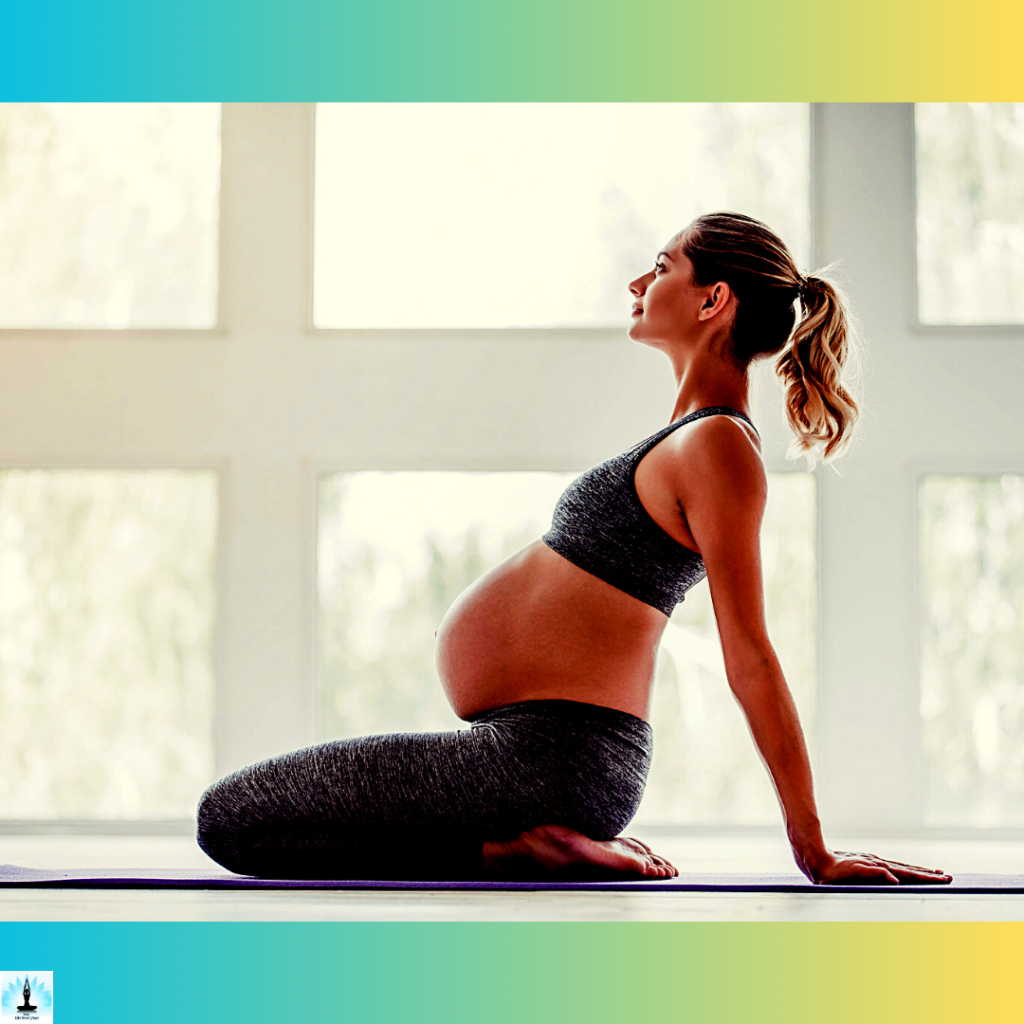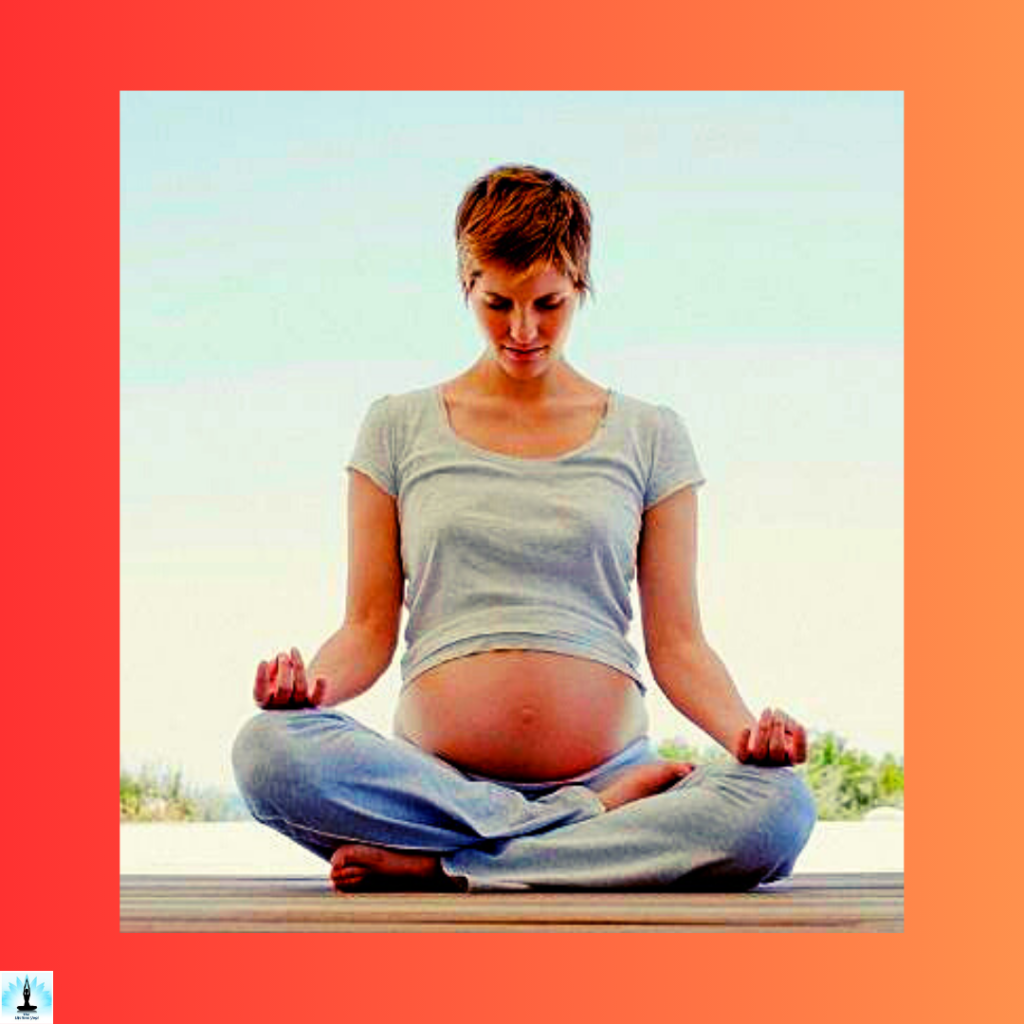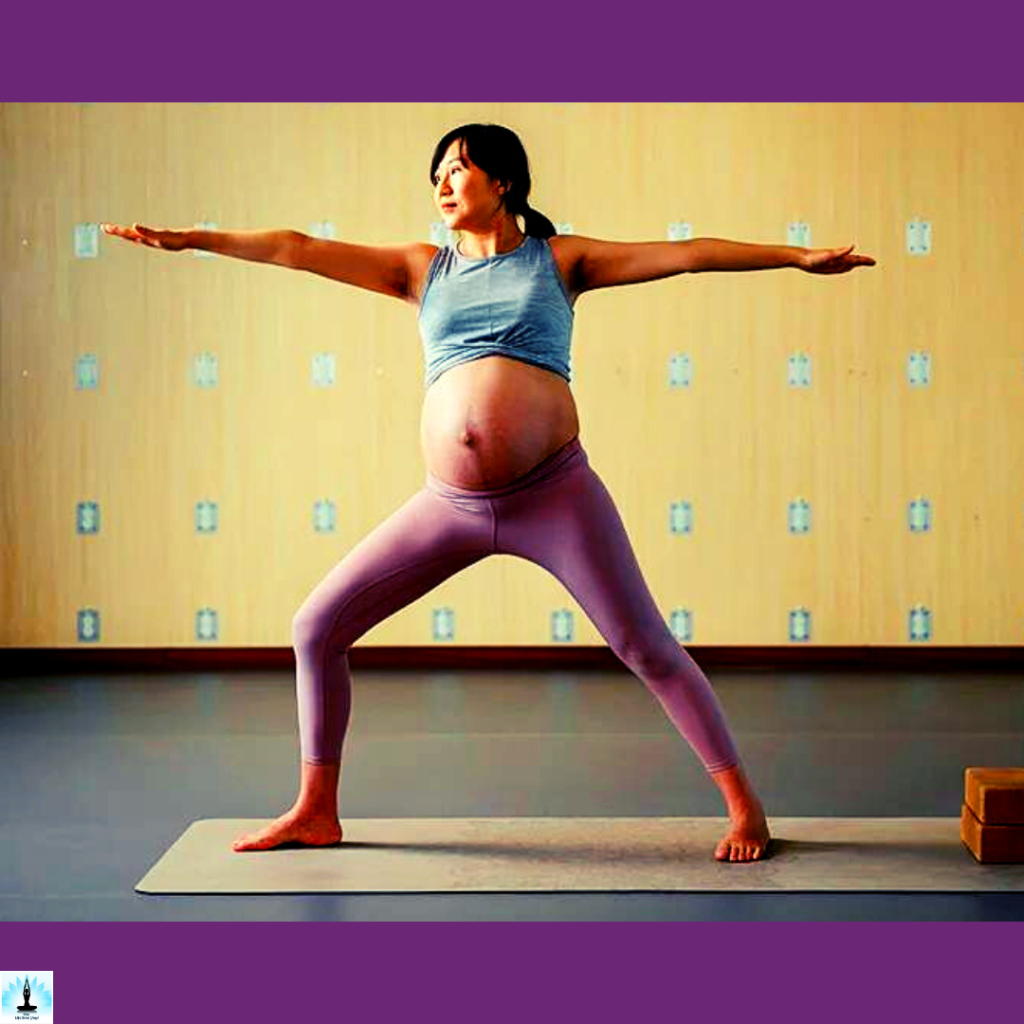Introduction: Top 10 Prenatal Yogasanas for Women in Pregnancy Journey
Pregnancy is a beautiful and transformative journey for women. Well, the topic is very sensitive and It is a time when self-care and maintaining physical and emotional well-being become crucial. Yoga can be a beneficial practice during pregnancy, offering numerous benefits such as improved flexibility, strength, relaxation, and better mind-body connection.
However, it is important to practice yoga under the guidance of a qualified prenatal yoga instructor and with the approval of a healthcare professional. In this blog, we will explore the top 10 yogasanas specifically tailored for women during their pregnancy journey.
Table of Contents
Can I Do Yoga Everyday While Pregnant?

In most cases, it is safe to do yoga every day during pregnancy, but it is important to listen to your body and make adjustments as needed. Daily yoga practice can provide numerous benefits such as improved flexibility, strength, relaxation, and better mind-body connection. However, it’s crucial to choose a gentle and modified prenatal yoga practice that is specifically designed for pregnancy.
While practicing yoga daily, pay attention to any discomfort, fatigue, or signs of overexertion. Modify poses as your body changes and avoid any movements or positions that feel uncomfortable or cause strain. It’s also essential to stay hydrated, take breaks when needed, and consult with a qualified prenatal yoga instructor or healthcare provider for personalized guidance.
Remember, every pregnancy is different, and the intensity and duration of your yoga practice may vary based on your energy levels, health, and any specific recommendations from your healthcare provider. Listening to your body and practicing mindfully will help ensure a safe and enjoyable yoga experience throughout your pregnancy.
When Can I Start Yoga for Normal Delivery?
It is generally safe to start practicing yoga for normal delivery during pregnancy. However, it is advisable to wait until the second trimester (around 14 weeks) when the risk of miscarriage decreases.
Starting yoga earlier may be appropriate for those who are already familiar with the practice and have a regular yoga routine. It is crucial to consult with your healthcare provider before starting any exercise program, including yoga, to ensure it is suitable for your specific pregnancy.
How Do I Prepare My Body for Normal Delivery?

Preparing your body for normal delivery involves maintaining overall physical fitness, building strength, and enhancing flexibility. Prenatal yoga can be a great way to achieve these goals.
Focus on gentle stretching, strengthening exercises, pelvic floor exercises (such as Kegels), and deep breathing techniques. Additionally, maintaining a healthy lifestyle, eating a nutritious diet, staying hydrated, and attending childbirth education classes can also contribute to preparing your body for a normal delivery.
Which Yoga Is Best for Uterus?
Yoga poses that gently stretch and tone the pelvic region can be beneficial for the uterus. Some recommended yogasanas for the uterus include Butterfly Pose (Baddha Konasana), Cat-Cow Pose (Marjaryasana-Bitilasana), Triangle Pose (Trikonasana), and Squat Pose (Malasana).
These poses help improve blood circulation in the pelvic area, strengthen the pelvic floor, and promote overall uterine health. It is essential to practice these poses mindfully and under the guidance of a qualified prenatal yoga instructor.
What To Avoid in Yoga When Pregnant?

While practicing yoga during pregnancy is generally safe, there are certain poses and practices to avoid. Avoid deep twists that compress the abdomen, intense backbends, strong abdominal exercises, and poses that involve lying flat on your back for extended periods.
It is also important to listen to your body and avoid any poses or movements that cause discomfort, strain, or shortness of breath. Always consult with a prenatal yoga instructor who can guide you on modifying poses and choosing appropriate sequences for your pregnancy.
How Can I Have a Painless Birth?
Achieving a completely painless birth may not be realistic for everyone, as pain perception can vary. However, there are strategies that can help manage pain during childbirth. Practicing relaxation techniques, deep breathing exercises, visualization, and meditation can help promote a sense of calm and reduce the perception of pain.
Staying active during pregnancy, maintaining good posture, and attending childbirth education classes to learn various pain management techniques can also be beneficial. It is important to remember that each birthing experience is unique, and having a supportive healthcare provider and birth team can greatly contribute to a positive and empowering birth experience.
How To Sleep When Pregnant?
Sleeping during pregnancy can be challenging due to discomfort, hormonal changes, and an expanding belly. Here are some tips for better sleep during pregnancy:
- Sleep on your side, preferably the left side, as it improves blood circulation to the placenta.
- Use supportive pillows to find a comfortable sleeping position that relieves pressure on your hips and supports your belly.
- Establish a relaxing bedtime routine to signal your body that it’s time to sleep.
- Create a calm and comfortable sleep environment, with a dark, cool room and a comfortable mattress.
- Limit fluid intake before bedtime to minimize nighttime trips to the bathroom.
- Practice relaxation techniques, such as deep breathing or gentle stretching, before sleep.
- If discomfort persists, consider using pregnancy support belts or consulting with a healthcare provider for additional support or guidance.
Can We Bend During Pregnancy?

Yes, bending during pregnancy is generally safe, but it’s important to do so with care and avoid sudden or jerky movements. As your pregnancy progresses, it is advisable to bend from the knees and hips, maintaining a straight spine, rather than bending at the waist.
This helps to protect the lower back and reduces strain on the abdominal muscles. If you experience any discomfort or pain while bending, it’s important to listen to your body and modify your movements as needed. Consulting with your healthcare provider or a prenatal yoga instructor can provide further guidance on safe bending techniques during pregnancy.
Top 10 Prenatal Yogasanas for Women in Their Pregnancy Journey
Tadasana (Mountain Pose)
Tadasana helps improve posture, balance, and body awareness. Stand tall with feet hip-width apart, aligning the spine, and bringing awareness to the breath. This gentle pose helps strengthen the legs, stretch the spine, and create stability.
Cat-Cow Pose (Marjaryasana-Bitilasana)
Cat-Cow pose helps release tension in the back and improve spinal flexibility. Get on your hands and knees, inhale as you arch your back and look up (Cow), and exhale as you round your back and tuck your chin (Cat). This flowing movement promotes gentle stretching and relieves lower back discomfort.
Butterfly Pose (Baddha Konasana)
Butterfly pose opens the hips and groin area, which can become tight during pregnancy. Sit on the floor, bring the soles of your feet together, and gently press your knees toward the floor. This pose helps relieve lower back pain and stimulates circulation in the pelvic region.
Warrior II Pose (Virabhadrasana II)
Warrior II pose helps strengthen the legs, improve balance, and open the hips. Stand with feet wide apart, turn one foot out, bend the front knee, and extend your arms parallel to the floor. This pose builds strength and stability while promoting a sense of empowerment.
Triangle Pose (Trikonasana)
Triangle pose stretches the sides of the body, opens the chest, and strengthens the legs. Stand with feet wide apart, reach one arm toward the front foot, and extend the other arm upward. This pose helps improve digestion, relieve backache, and enhance overall balance.
Modified Camel Pose (Ustrasana)
Modified Camel pose stretches the front body, opens the chest, and helps relieve back pain. Kneel with knees hip-width apart, place hands on the lower back, and gently arch backward. Support your lower back with a bolster or blanket if needed.
Supported Squat Pose (Malasana)
Supported Squat pose helps open the hips, stretches the groin, and strengthens the legs. Stand with feet wider than hip-width apart, toes turned out, and squat down with support under your heels. This pose can be modified with blocks or cushions for added comfort.
Seated Forward Bend (Paschimottanasana)
Seated Forward Bend gently stretches the back of the body, hamstrings, and lower back. Sit with legs extended, reach forward, and lengthen the spine. This pose helps calm the mind, relieve anxiety, and reduce fatigue.
Corpse Pose (Savasana)
Corpse pose is a deeply relaxing posture that helps release tension and promotes restful sleep. Lie on your back, close your eyes, and focus on deep, conscious breathing. Use props such as bolsters or blankets for support and comfort.
Pelvic Floor Exercises (Kegels)
Although not a traditional yogasana, Kegel exercises are highly beneficial during pregnancy. These exercises strengthen the pelvic floor muscles, which support the bladder, uterus, and bowels. They can be practiced in any comfortable position, focusing on contracting and releasing the pelvic floor muscles.
FAQs: Top 10 Yogasanas for Women in their Pregnancy Journey
Q1: Can I Start Practicing Yoga During Pregnancy If I Haven’t Done It Before?
A: Yes, you can start practicing yoga during pregnancy, even if you are new to it. However, it is important to seek guidance from a qualified prenatal yoga instructor who can provide modifications and ensure your practice is safe and suitable for pregnancy.
Q2: Are These Yogasanas Safe for All Stages of Pregnancy?
A: The top 10 yogasanas mentioned in this guide are generally safe for most stages of pregnancy. However, as pregnancy progresses, certain modifications may be necessary. Always listen to your body, avoid any discomfort or strain, and consult with your healthcare provider and prenatal yoga instructor for personalized guidance.
Q3: Can I Practice These Yogasanas If I Have Specific Pregnancy-Related Concerns or Complications?
A: If you have any specific concerns or complications related to your pregnancy, it is crucial to consult with your healthcare provider before practicing these yogasanas. They can provide individualized guidance based on your condition and may recommend specific modifications or alternative poses to ensure your safety and well-being.
Q4: Can These Yogasanas Help with Common Pregnancy Discomforts Like Back Pain and Swollen Ankles?
A: Yes, these yogasanas can help alleviate common pregnancy discomforts such as back pain and swollen ankles. They promote gentle stretching, improve circulation, strengthen the body, and promote relaxation, which can provide relief from these discomforts. However, it is important to practice them mindfully and within your comfort level.
Q5: How Often Should I Practice These Yogasanas During Pregnancy?
A: The frequency of your yoga practice during pregnancy may vary depending on your energy levels and overall health. Generally, practicing a few times a week can be beneficial. However, it is essential to listen to your body and rest when needed. Quality of practice is more important than quantity, so focus on mindful and safe practice.
Q6: Can Practicing Yogasanas Help Prepare My Body for Childbirth?
A: Yes, these yogasanas can help prepare your body for childbirth by improving strength, flexibility, and body awareness. They can also promote relaxation, which can be beneficial during labor. However, it’s important to note that childbirth is a unique and individual experience, and yoga should be seen as a supportive practice, along with other prenatal care and preparation.
Q7: Can I Continue Practicing Yoga After Giving Birth?
A: Yes, you can continue practicing yoga after giving birth. However, it is important to gradually ease back into your practice and listen to your body’s needs. Postnatal yoga classes specifically cater to the needs of women after childbirth and can help with recovery and regaining strength.
Q8: Are There Any Specific Precautions I Should Take While Practicing These Yogasanas During Pregnancy?
A: Yes, some general precautions include avoiding deep twists or inversions, not lying flat on your back for extended periods, using props for support and comfort, and staying hydrated throughout your practice. Always consult with your prenatal yoga instructor for specific precautions based on your stage of pregnancy and individual needs.
Q9: Can I Modify These Yogasanas If They Feel Uncomfortable or Strenuous?
A: Absolutely! It is important to modify the poses to suit your comfort level during pregnancy. Use props such as bolsters, blankets, or blocks for support, take wider stances, or shorten the duration of holds as needed. Your comfort and safety should be the priority, so don’t hesitate to make modifications that feel right for you.
Q10: Can Practicing These Yogasanas Guarantee a Smooth Pregnancy and Childbirth?
A: While practicing these yogasanas can contribute to a healthier pregnancy and potentially ease certain discomforts, there are no guarantees for a smooth pregnancy or childbirth. Every pregnancy and childbirth experience is unique. However, yoga can provide valuable physical and emotional benefits that support your overall well-being during this special journey.
Conclusion
Prenatal yoga offers women a gentle and nurturing way to stay active, connect with their bodies, and cultivate a sense of calm during the transformative journey of pregnancy. The top 10 yogasanas mentioned above are specifically chosen to support the changing needs of pregnant women, promoting physical strength, flexibility, relaxation, and emotional well-being.
Remember to listen to your body, practice with awareness, and consult with a prenatal yoga instructor or healthcare professional for personalized guidance throughout your pregnancy journey. Embrace the benefits of yoga and cherish this beautiful phase of life.
References
- Hodges, Julie (2007). The Practice of Iyengar Yoga by Mid-Aged Women: An Ancient Tradition in a Modern Life (PDF) (PhD thesis). Newcastle, New South Wales: Newcastle University. Archived from the original (PDF) on 25 March 2019. Retrieved 4 June 2019.
- Iyengar, Geeta S.; Keller, Rita; Khattab, Kerstin (2010). Iyengar Yoga for Motherhood: Safe Practice for Expectant & New Mothers. New York: Sterling. ISBN 978-1-4027-2689-7.
- Lekos, Leslie; Westgate, Megan (2014). Yoga for Pregnancy: Poses, Meditations, and Inspiration for Expectant and New Mothers. New York: Helios Press. ISBN 978-1-62914-362-0.
- Mallinson, James; Singleton, Mark (2017). Roots of Yoga. Penguin Books. ISBN 978-0-241-25304-5.
